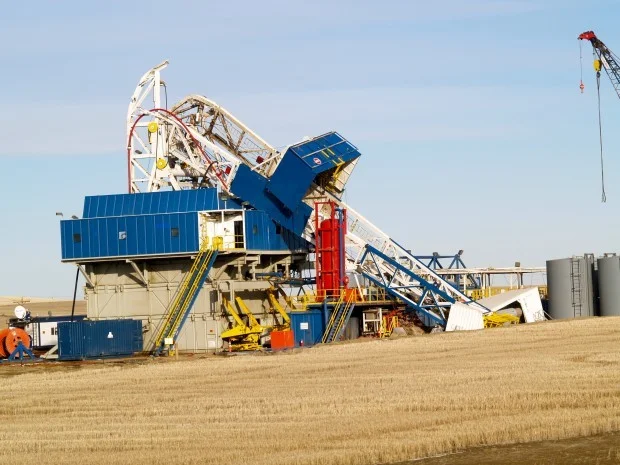Depth Capacity of Top Drive Drill Rigs
By Colin Rice · Colin Rice Exploration and Training (Pty) Ltd. · www.colinrice.co.za
In the second article of this series, we discussed the depth capacity of hydraulic longstroke diamond drill rigs. In this article I would like to discuss the depth capacity of top drive drill rigs.
This is the third article of our Technical Series on Drill Rig Capacity. Click here for an outline of the entire Drill Rig Capacity Series.
Top drive drills are used primarily for rotary percussion and dual-tube reverse circulation drilling applications where necessary rotational speeds are very low but torque requirements are high. A feature of these drills is their very long feed stroke which typically requires that rotation head travel is achieved with a hydraulic cylinder and steel wire ropes or with a hydraulic cylinder and chains.
The wire ropes (or chains) are secured at the rotation head and carry the entire load when tripping drill rods. The wire ropes or chains are therefore critical elements of the hoisting system and become the limiting factor in terms of “legal” lifting capacity.
To illustrate the problem, I have selected a well-known, high capacity top drive drill shown below. This drill has a rated “pullback” capacity of 130 000 lbs or 59 MT.
Pullback arrangement of the 130 000lb pullback drill rig - note the two pullback ropes attached to the rotation head.
It is clear from the photograph that two steel wire ropes attached to the rotation head provide the total pullback force on the rotation head. These ropes move through two sheave wheels and are then attached through a yoke to the main pullback cylinder.
This particular drill rig manufacturer uses steel wire ropes of 38mm diameter - my research indicates that the strongest available grade of 38mm rope has a Mean Breaking Load of 84 MT. If we apply a factor of safety of 6, the safe working load of each rope would be 14 MT and so, given that there are two pullback ropes, the “legal” pullback capacity of the drill is therefore only 28 MT and not the 59 MT as specified.
Let us come at the issue from the other direction; if we assume that an 84 MT rope is being used then, at full pullback load the rope is being used at a factor of safety of (84 x 2) / 59 = 2,84.
Obviously, if the boreholes drilled with the rig are shallow and the loads being lifted are within the “legal” limits of the hoisting system of the drill rig then there is no problem, however, if the loads exceed the “legal” pullback limit then the mining company and contractor will be exposed to risk should the system fail. It is necessary therefore that companies tackle the problem from a risk basis and ensure that all risks are identified and all necessary controls are put in place to ensure that risk is adequately managed. In a South African context, the person responsible for providing the authorisation to drill (normally the legally appointed Engineer) would have to specifically authorise use of the drill in excess of its "legal" load capacity.
As discussed in the earlier article, legislated factors of safety vary from country to country and in fact, in many countries there is no legislated factor of safety for wire ropes used in a drilling application. This makes management of risk even more difficult.
In this article I have used an example of a particularly high capacity top drive drill to illustrate the potential issues but if you do a similar exercise with every other top drive drill that uses steel wire pullback ropes, you will see that the same issue exists.
Every mining and exploration company has statutory and common law obligations to ensure that all equipment used and all operations carried out on their mines are safe and that all equipment complies with legal requirements. The purpose of this article, and the previous one is to highlight the issue so that mining companies and contractors understand what their potential exposure is. If you know what your risks are you can manage them.





This article aims to clarify some of the calculations that were published in our articles on the pullback capacity of top drive drill rigs and clear up any misunderstanding, particularly around the Schramm TX 130 drill rig.